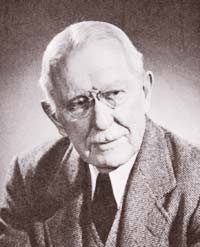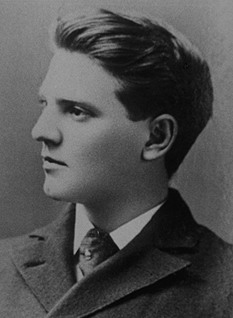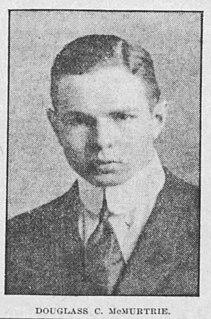This article presents lists of the literary events and publications in 1896.

Laura Elizabeth Ingalls Wilder was an American writer known for the Little House on the Prairie series of children's books, published between 1932 and 1943, which were based on her childhood in a settler and pioneer family.

Bertram Grosvenor Goodhue was an American architect celebrated for his work in Gothic Revival and Spanish Colonial Revival design. He also designed notable typefaces, including Cheltenham and Merrymount for the Merrymount Press. Later in life, Goodhue freed his architectural style with works like El Fureidis in Montecito, one of the three estates designed by Goodhue.

Arthur Rock is an American businessman and investor. Based in Silicon Valley, California, he was an early investor in major firms including Intel, Apple Computer, Scientific Data Systems and Teledyne.
Ingalls is a surname of Scottish origin and a placename deriving from the Latin term 'anglicus' referring to a person being from England, and may refer to:
Daniel Henry Holmes Ingalls Sr. was the Wales Professor of Sanskrit at Harvard University.

Bruce Rogers was an American typographer and type designer, acclaimed by some as among the greatest book designers of the twentieth century. Rogers was known for his "allusive" typography, rejecting modernism, seldom using asymmetrical arrangements, rarely using sans serif type faces, often favoring faces such as Bell, Caslon, his own Montaigne, a Jensonian precursor to his masterpiece of type design Centaur. His books can fetch high sums at auction.

Edward Kimball "E. K." Hall was an American football and baseball player and coach, college athletics administrator, lawyer, and business executive. He played college football at Dartmouth College from 1889 to 1891 and then served as the athletic director and head football and baseball coach at the University of Illinois from 1892 to 1894.
Billy Kimball is an American writer and producer. He is currently a co-executive producer on the HBO series Veep.
Sumner Stone is a typeface designer and graphic artist. He notably designed ITC Stone while working for Adobe. A specimen of ITC Stone is shown at his personal website.
Edwin Osgood Grover was a publisher and educator whose contributions to Rollins College enhanced its standing and reputation during his twenty-year tenure. He was active in the Winter Park, Florida, community and made significant contributions to the African-American community and to the creation of Mead Garden.

Arthur L. Valpey was an American football player and coach. He served as the head football coach at Harvard University from 1948 to 1949 and at the University of Connecticut from 1950 to 1951, compiling a career college football coach record of 12–21. Valpey played college football at the University of Michigan.

Herbert Livingston Satterlee was an American lawyer, writer, and businessman who served as the United States United States Assistant Secretary of the Treasury and then the Assistant Secretary of the Navy from 1908 to 1909.

Douglas Crawford McMurtrie was an American typeface designer, graphic designer, historian and bibliographer of printing.
James Putnam Kimball was a United States metallurgist and geologist who was Director of the United States Mint from 1885 to 1889.

The Chap-Book was an American literary magazine between 1894 and 1898. It is often classified as one of the first "little magazines" of the 1890s.
Crumbling Idols is a collection of 12 essays written and completed by Hamlin Garland in 1894. Garland was one of the most prominent American authors of the early 20th century, and contributed heavily to the literary movement known as American Realism. His work, Crumbling Idols, expresses his views and manifesto as a veritist (realist) artist. In it, he repeatedly emphasizes the importance of a uniquely American literature, one that breaks away from tradition and the past and focuses on the present in order to depict reality through the artists own eyes.
Hannibal is a latinization of the Carthaginian masculine given name ḤNBʿL, meaning "Baal is Gracious". Its continued use in later times and cultures, up to the present, is mainly due to the historical fame of the Carthaginian leader Hannibal, who commanded its forces during the Second Punic War.














